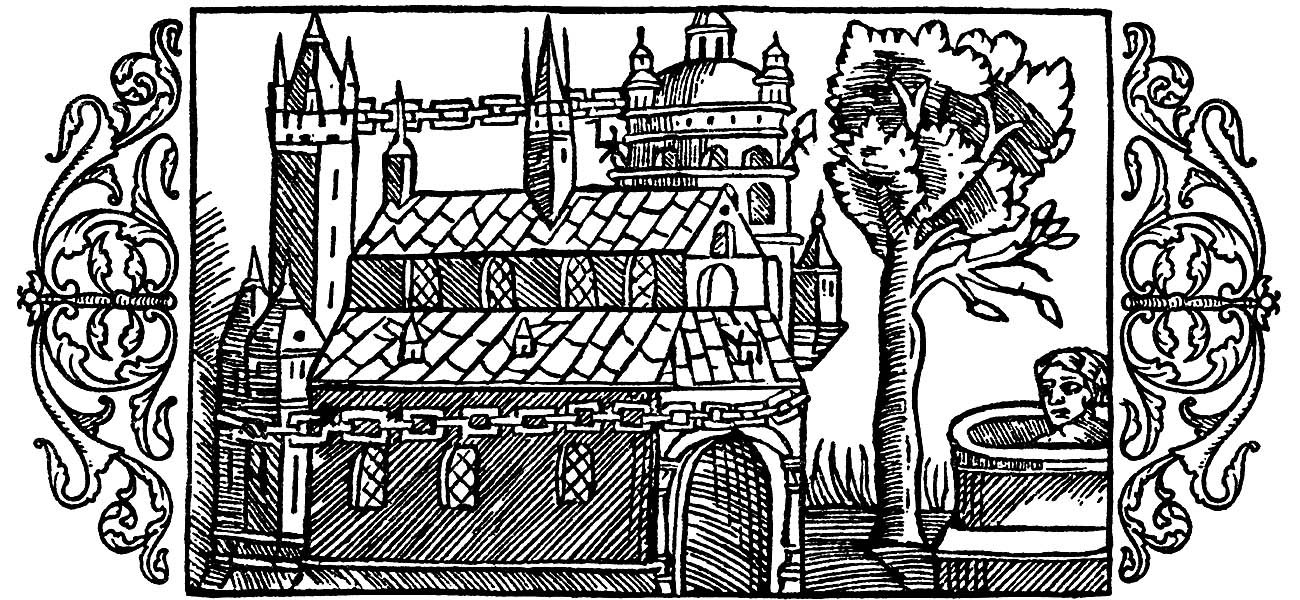Temple of Uppsala
Near the centre of Sweden is the temple & adjoining town of Uppsala. It is primarily wooden in structure at this point, though will eventually take in stone & glass windows in the coming three centuries (probably being built over to become a Christian church). The centre of the ancient Nordic religious practices, it is part of Gamia Uppsala (or Old Uppsala).
Sacrifices are made regularly here, usually consisting of male animals, of which nine is sacrificed at any one time. The carcasses are hung from the trees of the sacred grove, and the odd time human, elf, or dwarf males are sacrificed too. Usually nine of a specific animal is killed in this way. Many are hung from the ash tree, especially the human carcasses.
Each of the three idols inside is attended by a separate priest, and people would make sacrifice or reparation for the following in specific events:
- Famine or plague, it is Thor they entreat.
- War, it is Odin.
- Marriage it is Freyr.
Purpose / Function
The Temple is the most sacred place to all Norse, and many will try to get to it at least once in their lifetime. Sacrifices, especially blood sacrifices, are carried out here. Also, the beseeching of the gods for mortal affairs are common.
Alterations
The Temple has had the wooden structure of it built many decades ago. Before, the sacred spring, and tree was present but no building. It was built out of local wood believed to be sacred as the gods are believed to inhabit it.
Architecture
The main temple is a wooden structure of local trees believed to have been home to the gods, and some speculate spirits. There are three statues placed inside at the far end with two rows of wooden poles spread 5 to 6 feet apart running a full kilometre long inside. There are 144 of these poles. The statues are wooden, all seated and consist of Thor with a mace at the front, and behind to each side is Odin dressed in armour, and Freyr with an erection. There are slit windows, and sacred runic text placed on the statues and around the entry, also around the top & bottom of the poles. The typical Scandinavian style of line carvings are found throughout, and regularly adorned in red, white, and black. Candles are placed throughout.
A massive tree, sits to the south to one side, an ash tree of great size with long branches are present. Also, a sacred spring is nearby, and it sits in a sacred grove, with hulls visible around.
Defenses
It sits near the town of Uppsala, that is used as much for catering to the faithful & the temple. This, along with the faithful, act as a defensive force to protect pilgrims from attack. The fact it is central in Sweden, with Norway to the West, the Baltic sea to the east & west of Sweden, and Lapland to the north, makes it a daunting prospect to get anywhere inland near it. Most if not all the Swedes & Norwegians can easily raise an army if it is threatened, and respond quite quickly to take over. The fact that these two nations, and Denmark have their own naval traditions, makes even more harder to get to with ill-intent. Also, with the Sami to the north, the land there is harsher itself to travel.
History
The Temple has existed in some form throughout the past few centuries. The grove, spring, and Ash tree has been there longer than the temple proper. Sacrifices have always been made there since it was established all that time ago.
Tourism
The Temple is extremely important to the Norse and many visit at least once in their life time to beseech the gods or to have sacrifices made in their name. To this day, they still do.
Founding Date
Unknown
Type
Cathedral / Great temple
Parent Location
Ruling/Owning Rank
Owning Organization
Related Report (Primary Locations)
Related Plots



Comments